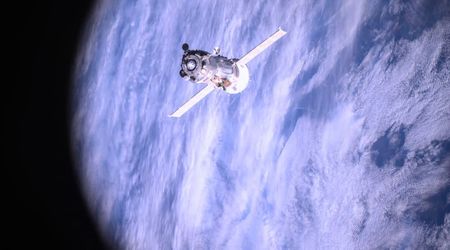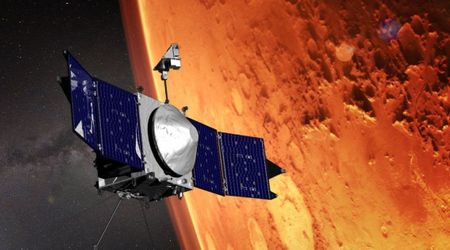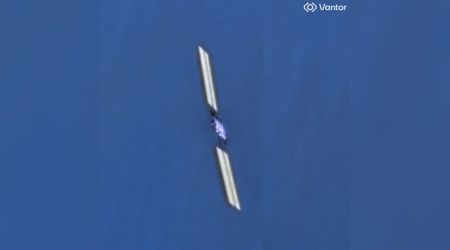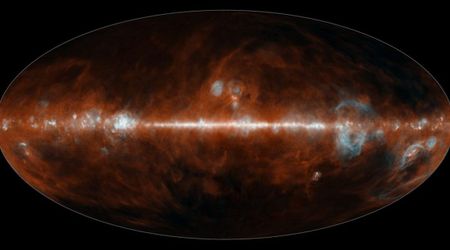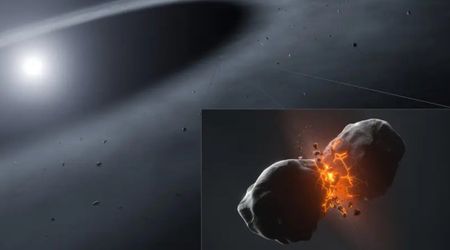How to aim a telescope


If this is your first time using a telescope, you may be wondering how to point it at the various space objects across the night sky. Using a telescope for the first time can be intimidating, but it's actually quite simple once you know the basics.
I remember the first time I set up my new telescope in the garden, I had no idea where to start. So in this article, I'll walk you through the basics of how to aim a telescope. By the end, you'll be an expert at finding your way around the sky!
How to use a finderscope to aim your telescope
The first thing you should learn to use in order to aim a telescope properly is the finderscope. Most telescopes come with a finderscope, which is like a tiny telescope that is used to help you point the main telescope in the right direction. This ingenious little device is used to help you point the main telescope in the right direction.
The finderscope is usually mounted on the side of the main telescope tube and has a crosshair or reticle inside it that you use to line up with the object you want to look at.
To use the finderscope, first look through the eyepiece and roughly locate the object you want to view in the main telescope. Once you have found the object take your eye away from the eyepiece and look through the finderscope. You are going to use the finderscope to fine-tune your telescope aim.
Adjust the position of the main telescope until the object is centered in the finderscope, then look back through the eyepiece to confirm that the object is now centered in the main telescope field of view. Adjust the focusing knob to bring the object into focus and you're ready to start observing!
I would recommend watching the below tutorial on how to align a finderscope from Michael Bernardo
How to aim a telescope mounted on an alt-azimuth mount
An alt-azimuth mount is the most common type of telescope mount you will find on the market. It is a simple two-axis mount that allows the telescope to move up and down (in altitude), and left and right (in azimuth).
This type of mount is very easy to use and is great for beginners. You'll need to manually move the OTA (optical tube assembly) in the direction you want to look. The best way to aim a telescope on an alt-azimuth mount is to use the slow-motion control knobs on the mount.
How to aim a telescope mounted on an equatorial mount
An equatorial mount is a more advanced type of mount that is a little more complicated to use than an alt-azimuth mount, but it has the advantage of being able to follow the rotation of the night sky. This makes it much easier to keep an object in your telescope's field of view for extended periods of time.
Before you can aim your telescope mounted on an equatorial mount, you first need to align it with the celestial pole. The celestial pole is the point in the sky around which all of the stars appear to rotate.
In the northern hemisphere, the celestial pole is located close to the star Polaris. In the southern hemisphere, the celestial pole is harder to find because there are no bright stars in the area, refer to this handy guide from the Australian telescope experts from OzScope: https://www.ozscopes.com.au/how-to-polar-align-equatorial-mount-southern-hemisphere.html
Once you have aligned your telescope with the celestial pole, you can use the slow-motion control knobs to move the telescope in the east-west and north-south directions. The east-west knob is used to track the movement of objects across the sky from left to right (this is known as 'right ascension'). The north-south knob is used to move the telescope up and down in declination.
It is also possible to purchase and install an electronic motor drive to automatically track objects across the sky. This is something I did when I wanted to try astrophotography as I needed to take long exposure pictures. It can be ideal if you simply don't want to worry about constantly adjusting the position of your telescope.
How to aim a telescope mounted on a computerized GOTO mount
A goto mount is a computerized mount that uses motors to move the telescope to specific coordinates in the night sky. These mounts are controlled by a hand-held controller that allows you to input the coordinates of an object you want to view. The goto mount will then aim the telescope to that location so you can view it through the eyepiece.
To use a goto mount, first, you will need to align the mount with the celestial north pole. This process is called polar alignment and it ensures that the mount is properly aligned with the rotation of the Earth.
I recommend following the below polar alignment tutorial from telescope manufacturer Mead Instruments:
How to aim a Dobsonian telescope
Dobsonian telescopes are a type of reflector telescope that is mounted on a simple alt-azimuth wooden platform. They are named after their inventor, John Dobson, who designed them to be easy to use and affordable. Dobsonian telescopes are very popular with amateur astronomers thanks to their large aperture.
The best way to aim your Dobsonian telescope is to manually move the telescope tube on the platform left or right, depending on where your target is located. Then use the slow-motion control knobs on the mount. To use the slow-motion control knobs, first, locate the object you want to view in the eyepiece. Then, use the slow-motion control knob up or down to move the telescope in small increments until the object is centred in the field of view.

What to aim your telescope at
There is a myriad of different things to admire in the night sky. Here are some of my favorite celestial targets that are perfectly suitable for beginners:
- The Moon
- The planets (Mars, Jupiter, Saturn)
- Star clusters (The Pleiades)
- Nebulae (Orion)
- Galaxies (Andromeda)
The Moon is probably the best target you can start with. It's big and bright, so it's easy to aim your telescope at it and you can see a lot of detail. With a little bit of practice, you'll be an expert at aiming your telescope at those space objects in no time!

The easiest way to find objects in the night sky
So, you now know how to aim your telescope and you know how to use your finderscope. You have chosen what you want to observe tonight and the only thing left to do is to find that special target in the night sky.
The easiest way to do so is by using planetarium apps like SkySafari or Star Walk 2. They will show you a real-time map of the night sky and all you have to do is to point your device in that direction and the app will do the rest.
Once you have found the object you want to observe, centre it in your telescope's field of view, adjust the focusing knob and enjoy the view!
Good luck and clear skies!
